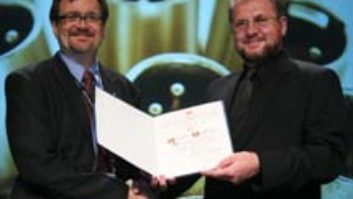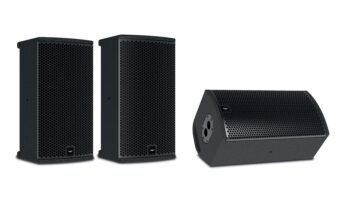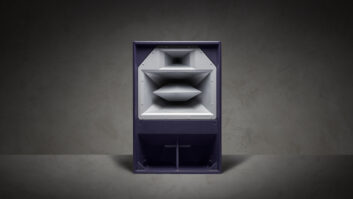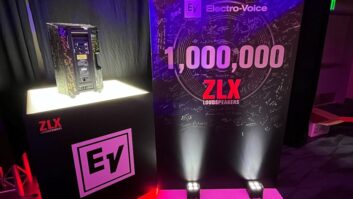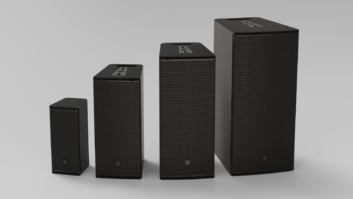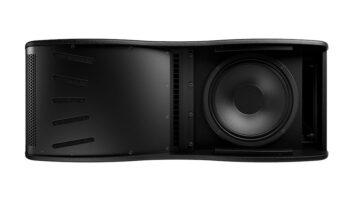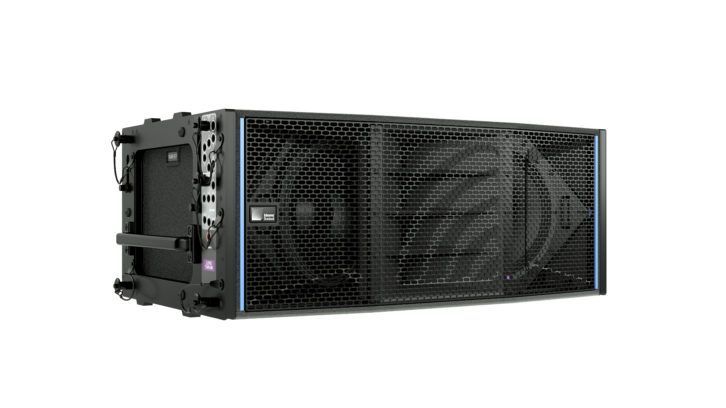
out from the sides and protrude slightly in the center of the front grille.
There’s nothing like a hard deadline—a true, fixed-in-stone, has-to-be-on-the-truck deadline—to inspire reinvention. As we sit down in the Don Pearson Theater at the Berkeley, Calif., offices of Meyer Sound to talk about Panther, the company’s new flagship line array loudspeaker, company founder John Meyer starts out with a story about an engineering company that was looking to earn a contract with NASA on the Mars helicopter.
The bid was in the neighborhood of $85 million and proposed that the project be done in three years. NASA said that they could have the $85 million but that they had two years to complete it. When they asked why only two years, they were told, “Because that’s when the rocket takes off.” They took the job.
After quickly interjecting that he in no way means to compare building a rocket to building a new speaker, Meyer begins recounting the past year inside the company, where all other projects were put on hold and all departments began working in unison under the deadline pressure of having Panther built, tested and ready for opening night of Ed Sheeran’s hugely anticipated, 65-show, worldwide stadium/arena tour, to begin in Dublin on April 23 and end more than a year later in Perth, Australia.
In late March, flanked by Katie Murphy, engineering director, acoustical and mechanical, and Tim Boot, director of global marketing, Meyer seemed relaxed and confident. Panther was ready ahead of schedule.
The impetus for Panther came out of a regular chat with Lars Brogaard at production house Major Tom in England, audio providers for the Sheeran tour and longtime Meyer partner. They were looking at busting out of the pandemic with a major show to support Sheeran, and hinted that if Meyer were ever interested in building a new speaker, one with the power of Leo in the footprint and lower weight of Lyon, they would have an eager customer in 10 months, when Sheeran was scheduled to go into rehearsal.
Hearing this, and knowing that Leo was approaching its 10th anniversary, the company immediately began setting design goals for what became Panther, calling for a powerful, lightweight, energy-efficient, Milan-connected box. In practical terms, that meant an all-new amplifier, a new horn with 80-degree, long-throw coverage, and new, sustainable materials throughout.
All Meyer Sound speakers, studio and live, are self-powered, with nearly every line incorporating some form of Class AB amplification. To meet the weight goal of 150 pounds (Leo weighs 265 pounds, Lyon 199), they knew they would need to make the jump and develop a digital amp—not some variation on a hybrid system—for Panther.
Innovations: Meyer Sound PANTHER Large-Format, Linear Line Array Loudspeaker
“We had to pull the weight from everywhere, but you start with the amp,” says Murphy, who was first tasked with developing the new horn but soon became the equivalent of a project manager, funneling and correlating all updates from all departments. “Going fully digital gives you the opportunity to get rid of a lot of those individual pieces in the chassis that weigh a lot of pounds. Then all of a sudden, the internal pieces of wood that make up the box are shallower, and you can maybe get rid of a rib that was supporting the driver. Then you find better materials for heat sinks, work on the power supply and power correction. Every department was on the same page, pulling weight from wherever they could. By establishing the goal early, we got everyone involved, and I think that made all the difference. Today, Panther has a 4-channel, Class D chassis that weighs less than the transformer in Leo.”
Perhaps the most significant advance in the Meyer Sound Panther was the new horn. It had to feature long-excursion and tight coverage, with the three models in the line ranging from 110-degrees horizontal coverage (W), to 95 degrees (M) down to Panther-L’s 80-degree pattern. A variable horn was never in the plans.
“We had the horns for 110 and 95 degrees from Lyon and we knew they worked,” Murphy says. “Bob McCarthy here at Meyer had been talking about this 80-degree horn for a while, so we knew we wanted this long-throw version that rolled off at -3 and -6 and was super-smooth and all that. We also knew that internally, we needed the W and M horns from the Lyon to be able to it. It’s the same horn, and it needs to have the same meetup point for the drivers, the panels, the manifold and everything else. That’s why it has a new look—the front had to protrude because the meetup point had to be the same, and we couldn’t move it further back in the box.”
“When you listen to that horn, you realize that it’s just a beautiful piece of engineering,” Boot interjects. “And it looks cool! But the musicality, the response…it its right into the Meyer family, and that’s important. We want to be flexible and consistent up and down the product line, while ensuring that all models work seamlessly together. That’s built into the company’s founding commitment to linearity, and it shows in advancements like this new horn.”
In feedback from clients over the past few years, which John Meyer calls “data gathering,” it was clear that rising expenses and new power requirements around the world were leading to high demand for more energy-efficient products moving forward. Plus, the company has long supported sustainable materials and sustainable touring. On release, Panther measures 20 percent more energy-efficient than Lyon, with less heat overall.
Dealing with power turned out to be one of the bigger challenges and occupied much of the development. Suffice to say that major strides were made, particularly in higher-voltage rails and advanced power factor correction. Maximum peak output comes in comfortably at more than 150 dB.
Meyer Sound Introduces Flagship PANTHER Line Array
With all these physical, electrical and mechanical advances, Panther still had to connect with the outside world. While continuing to incorporate analog I/O, which remains always-on and seamlessly kicks in if there is a problem, Panther also becomes the first line array loudspeaker to add Milan/AVB connectivity.
“This is big for us,” Boot says. “We are finishing the path to becoming fully digital, and there are many pathways. The AVB open standard is important for us. The precision of the signal is critical in a line array, and if there is any shift of the signal on the way to the driver, bad stuff can happen. AVB is the only digital signal carrier that can guarantee the timing, along with the bandwidth reservation on the network, to make sure the signal gets to the speaker precisely when it needs to.”
Panther made its public debut on April 23 with the launch of the Ed Sheeran tour, and made its industry-wide debut at InfoComm in Las Vegas the second week of June.

